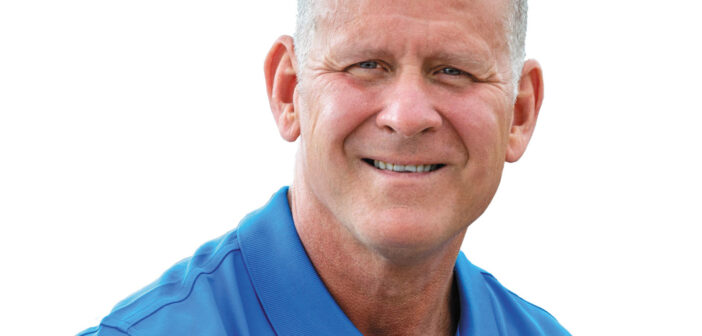by BRUCE HAASE
Rvery crisis begets the need for change and that’s certainly no different today as brands navigate a new terrain amid the COVID-19 pandemic. But, while the COVID crisis has hit travel in a way we couldn’t have imagined as we enjoyed some of the best years in an extended upturn just prior to it, it’s important to look at how we can learn from the situation and adapt accordingly. After all, the experts don’t foresee a full recovery for our industry until at least 2024, according to the most recent forecast from STR and Tourism Economics. So, what can brands do today so that they don’t perish?
There’s no doubt that expectations have changed due to COVID-19. Communication with guests has always been a key to success, but now it’s more important than ever. Particularly, guests want and need to know what brands are doing to keep them safe. For the most part, brands seem to understand this. Months ago, many of the major hotel brands announced their enhanced cleanliness and safety plans. It was a good first step, but a brand’s No. 1 job during this crisis is to continue to manage expectations for guests and owners. Here’s how the nimblest brands can adapt.
OVER COMMUNICATION ISN’T A BAD THING
It’s quite simple: guests need to know what you’re doing to keep them safe, and brands can’t assume that the way in which customers gather their information is one size fits all. Guests expect to see and clearly understand the brand’s promise prior to arrival, experience it during their stay, and be reminded of it afterward.
That means brands need to outline cleanliness programs on their websites so people can make an informed decision to book. Upon arrival, guests then expect to be reassured that brands take their safety seriously. Hotels should have digital signage throughout the property, including at high touchpoints such as elevators, guestrooms, and bathrooms to quickly alert guests of cleanliness procedures. When a guest checks in, front-desk team members also need to clearly and confidently explain any new processes that bring the brand promise to life. For example, inform them whether fitness centers, pools, and other amenities have been closed. In an extended-stay hotel, share procedures such as contactless linen delivery. The key is to set the expectations for their stay right away, as confusion will lead to lower guest satisfaction.
Of course, your relationship with guests doesn’t end at checkout, and communication goes both ways. Follow up with post-stay surveys to garner feedback. Not only will you glean useful data about what you did right, but you’ll also see how you can improve for the next guest. If multiple guests say they don’t want their rooms cleaned every week in an extended-stay hotel, for example, then you know how to adjust operations accordingly to meet expectations.
WITHOUT FOLLOW-THROUGH, IT’S NOTHING
It’s not enough to communicate with guests if there’s no follow-through to back it up. Brands can often be fragmented entities, with some owners adhering to every standard while others aren’t. Customers need to trust that brands are consistently keeping their promises irrespective of ownership. Otherwise, they’ll go straight to the competition who is delivering. Guests today, more than ever, are booking travel based on the safety promise. So, for instance, if the brand promise is that a guestroom door will be sealed off with a cleanliness sticker to alert guests that no one else has touched the room since cleaning and then it’s not there on arrival, trust is immediately shattered. You’ve lost a customer (and other potential guests when the bad reviews hit the sites) to the hotel across the street that will follow-through.
FLEXIBILITY IS THE FOUNDATION
Especially during a pandemic when information about a new disease changes constantly, guest expectations change quickly. Likewise, hotels’ processes and procedures need to adapt just as fast. When COVID-19 first hit, changes at the brand level during those first two weeks were almost a daily occurrence. What might have been a good decision one day wasn’t the best decision the next as new information was released. At one point during the pandemic, the focus was on cleaning touchpoints over masks. Then, we learned the virus was spread more through the air than through touch. So, instead of constantly cleaning fitness equipment, the decision then came to close the fitness centers instead.
When decisions are flying so quickly, it’s ever more critical to keep that channel of communication open with guests and set expectations in order to dispel disappointment. Yes, hotels are a place for people to put their heads. But at the end of the day, we are a service industry. We are there to make guests feel comfortable. When they feel so, we’ve done our job. And brands cannot do that without flexibility and, where applicable, alignment across multiple ownership groups.
A NEW WORLD
One thing is certain: The world will never be the same. And brands cannot go back to how things were before the pandemic. They will need to make more decisions and go back to the drawing board.
Ten years ago, the hospitality industry enjoyed brand differentiation. A large hotel company could have upward of 30 brands – and it worked because there were differences in amenities. But will brands have the ability to differentiate the way they used to? For brands with a big breakfast buffet as a central standard, will guests ever feel comfortable eating at buffets again? How about communal spaces? Will people want to gather with strangers anytime soon?
Guest expectations will continue to change as we move through and past the pandemic. Brands that are flexible and nimble will rise to the occasion, while those slow to adapt will fall. Now is the time for brands to listen to guests and find opportunity amid this time of uncertainty.




